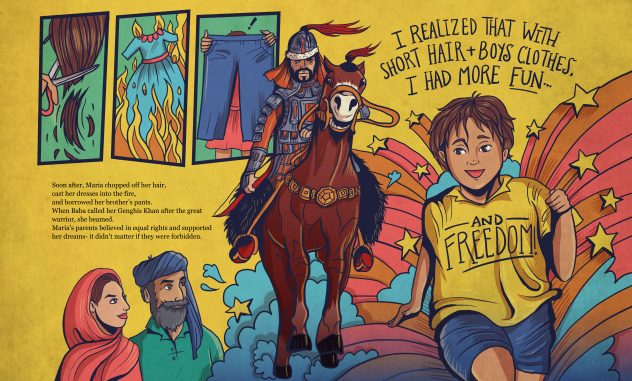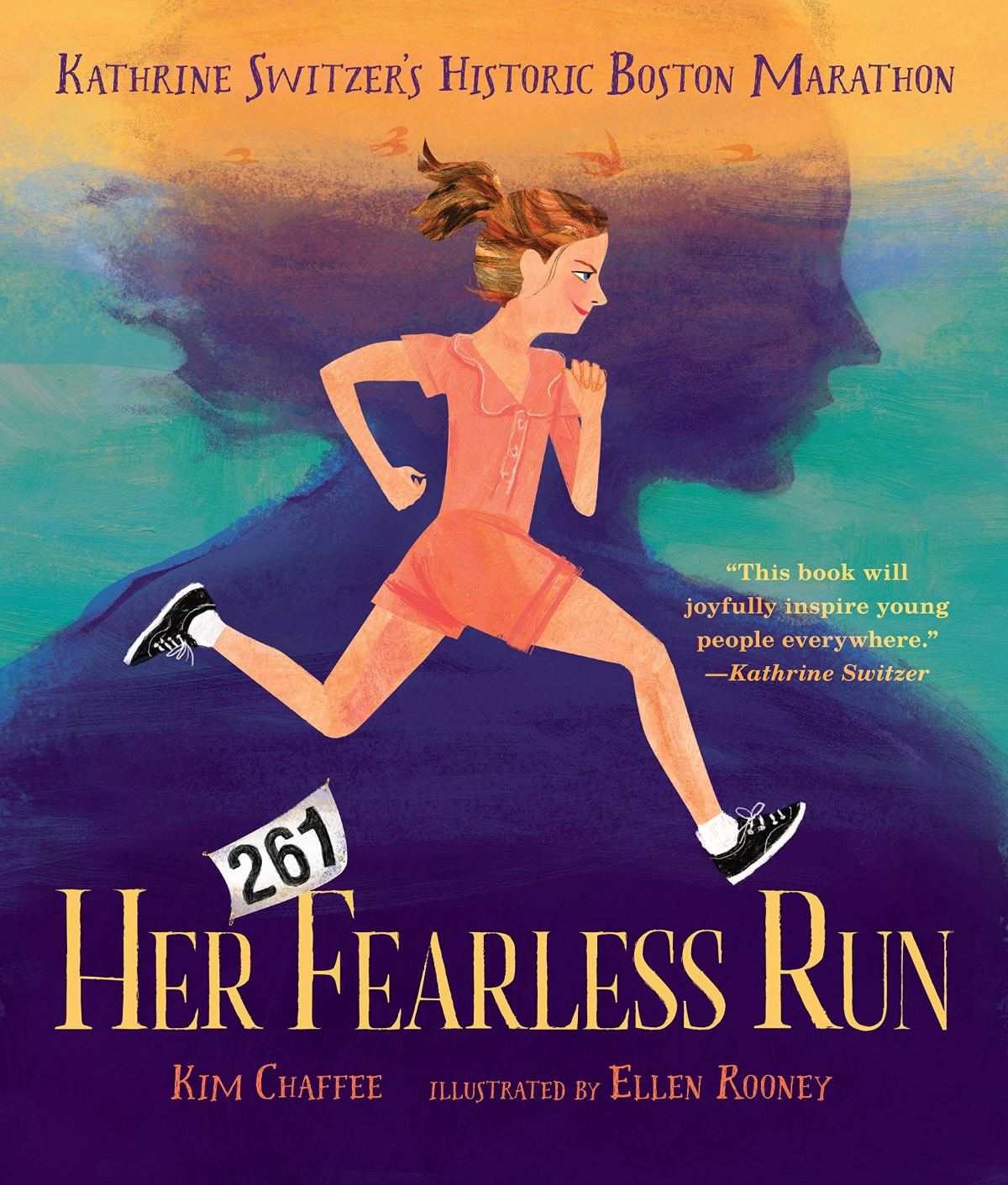My final post for this year’s Women’s History Month takes us to the world of sport.
If any of you are living where libraries are still open, you can grab these books.
For the rest, maybe reading a post that’s not one jot about coronavirus will refresh you.
The dire warnings of not-so-long-ago decreeing that women’s bodies could not withstand the rigor of riding a bicycle, for instance, or running a long distance race, seem ridiculous today.
Throughout history, women have borne up under tremendous physical challenges, from the brutality of enslavement, to the never-ending, back-breaking work of farm and homestead, to the extraordinary labors of childbirth. Yet the male establishment determinedly barred them from sport of all kind.
Here are stories of women who broke those barriers so girls and women today can freely participate in sport and recreation:

Born to Ride: A Story About Bicycle Face, written by Larissa Theule, illustrated by Kelsey Garrity-Riley
published in 2019 by Abrams Books for Young Readers
When bicycles hit the scene in the late 1800s, women were expected to refrain from riding them. It wasn’t genteel, you see. In fact, early female bicyclists who defied such conventions were hailed by Susan B. Anthony for the exceptional role they played in the emancipation of women.

One weird caution leveled at women in particular was that of “bicycle face,” a condition supposedly resulting from the great strain and focus required to ride. Bulging eyes and a tight jaw were the tell-tale signs. Simply dreadful!

This jolly story tells of one girl’s decision to buck the naysayers and ride a bike. Lengthy author’s notes tell lots more about bicycle face, early wheelwomen, and the women’s suffrage movement. Ages 4 and up.

Girls with Guts!: The Road to Breaking Barriers and Bashing Records, written by Debbie Gonzales, illustrated by Rebecca Gibbon
published in 2018 by Charlesbridge
I graduated from high school in 1979, just seven years after Title IX was signed into law. It is astonishing to me to see how many more sporting opportunities have opened up for young girls in the years since then.

This energetic, upbeat book zips us through some examples through history of the extreme limitations placed on women athletes, pops in on a number of undaunted women who thumbed their noses and participated anyway, and then introduces the legislative battle for Title IX and the recent generations of women athletes who have benefited from it.

I didn’t expect to learn as much as I did from this zesty primer! It’s a buoyant read for anyone, perhaps especially meaningful to you sporty families. Ages 6 and up.

A Girl Called Genghis Khan, written by Michelle Lord, illustrated by Shehzil Malik
published in 2019 by Sterling Children’s Books
Of course, the right for women to play sports is not equal across the globe. This fascinating story introduces us to one Pakistani woman who has needed an unusual amount of bravery.

Maria Toorpakai Wazir’s fervent desire to play outdoors, to engage in the rough and tumble world with her brothers, and to pursue her sport of squash were met with dire threats from the Taliban. The course required of her to persist in her dream, supported by her courageous parents, has been highly unusual and terribly difficult.

I thought maybe we’d see Maria in the Tokyo Olympics this summer. Alas, that won’t happen but you’ll still find her a cool athlete to meet. Ages 6 and up.

Her Fearless Run: Kathrine Switzer’s Historic Boston Marathon, written by Kim Chaffee, illustrated by Ellen Rooney
published in 2019 by Page Street Kids
Last year my women’s history posts included the story of Bobbi Gibb, the first woman to complete the Boston Marathon though she had to sneak onto the course, run it unofficially, and wait a l-o-n-g time to be recognized for that achievement.

Here you can meet another Boston Marathon history-maker, the first woman to run it as a registered runner. Now, the officials did not realize that K.V. Switzer was female when they assigned her a number, and wow! did she encounter fierce opposition along the course, and it would be five more years, 1972, before women were officially allowed to enter the race, but run it she did, in 4h 20.

Switzer’s story is another one of these jaw-dropping accounts that are hard to believe as we stand here in 2020. It’s important to read stories like hers, to recognize the silliness of the objections women have faced and continue to face, objections that prevent us from participating in what we love and where we excel. Ages 6 and up.

Long-Armed Ludy and the First Women’s Olympics, written by Jean L.S. Patrick, illustrated by Adam Gustavson
published in 2017 by Charlesbridge
Finally, an account of someone I’d never heard of, Lucile Godbold. Born in 1900, one of a whole passel of wild and crazy kids, Ludy grew to be six feet tall with astonishing athletic abilities, eventually finding her way to the college shot put squad.

Ludy even made it onto the American team for the first “Women’s Olympics,” an event that took place in Paris in 1922, six years before women’s track and field was included in the Olympic Games and 26 years before the women’s shot put was added to the Olympics.

Ludy is one terrific gal you will certainly enjoy meeting, and with the Summer Games approaching this year, it’s a grand time to check this one out. Ages 5 and up.
*****
That’s it for my 2020 women’s history posts.
I hope you’ve found some dynamite reads over the past four weeks to share in your households or just enjoy yourselves.
Find dozens and dozens of exceptional women’s history titles I’ve posted over the years in my list here.
The best way to keep up with what’s happening
on Orange Marmalade is to subscribe.
You’ll get an e-mail notification every time there’s a new post.
Don’t worry! It’s all free!
